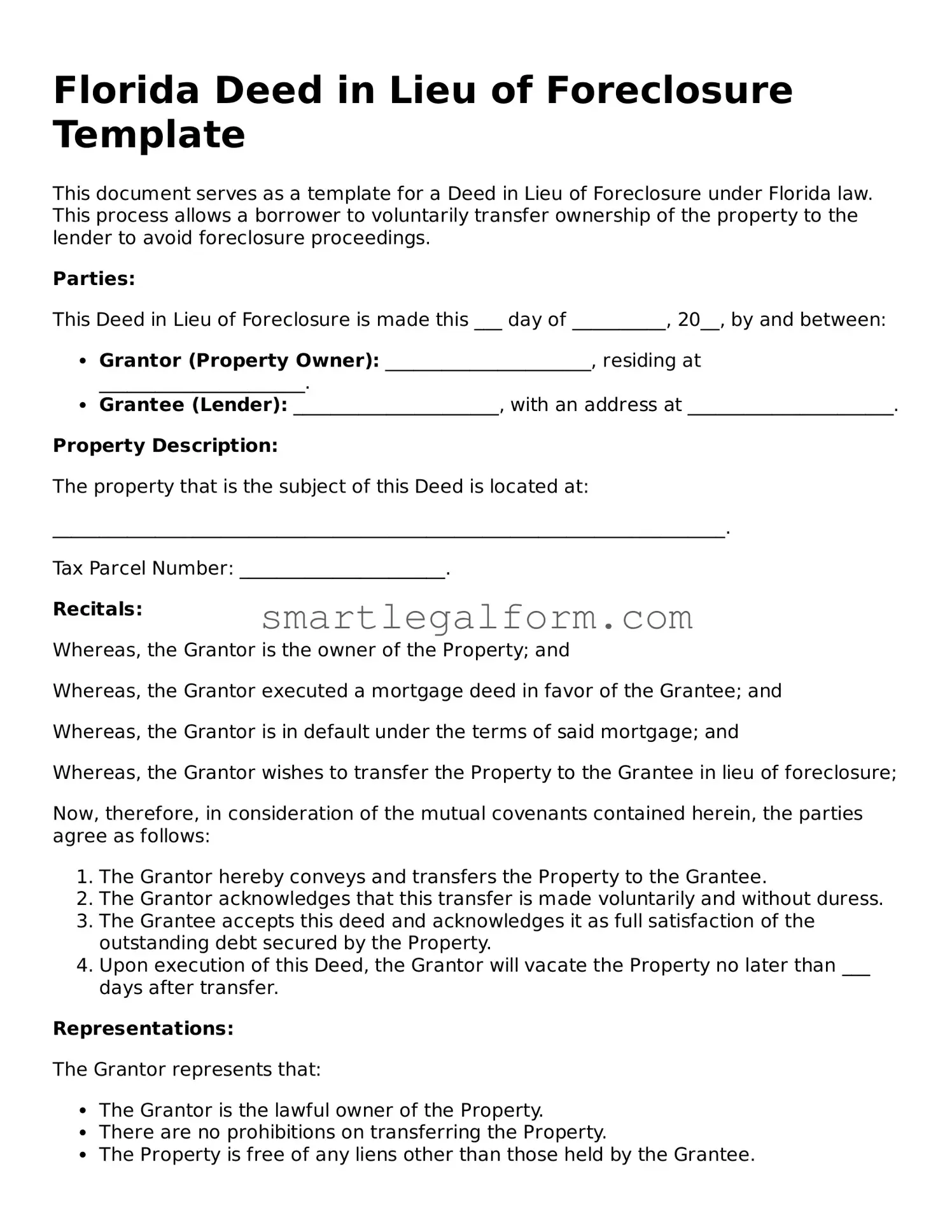Florida Deed in Lieu of Foreclosure Template
This document serves as a template for a Deed in Lieu of Foreclosure under Florida law. This process allows a borrower to voluntarily transfer ownership of the property to the lender to avoid foreclosure proceedings.
Parties:
This Deed in Lieu of Foreclosure is made this ___ day of __________, 20__, by and between:
- Grantor (Property Owner): ______________________, residing at ______________________.
- Grantee (Lender): ______________________, with an address at ______________________.
Property Description:
The property that is the subject of this Deed is located at:
________________________________________________________________________.
Tax Parcel Number: ______________________.
Recitals:
Whereas, the Grantor is the owner of the Property; and
Whereas, the Grantor executed a mortgage deed in favor of the Grantee; and
Whereas, the Grantor is in default under the terms of said mortgage; and
Whereas, the Grantor wishes to transfer the Property to the Grantee in lieu of foreclosure;
Now, therefore, in consideration of the mutual covenants contained herein, the parties agree as follows:
- The Grantor hereby conveys and transfers the Property to the Grantee.
- The Grantor acknowledges that this transfer is made voluntarily and without duress.
- The Grantee accepts this deed and acknowledges it as full satisfaction of the outstanding debt secured by the Property.
- Upon execution of this Deed, the Grantor will vacate the Property no later than ___ days after transfer.
Representations:
The Grantor represents that:
- The Grantor is the lawful owner of the Property.
- There are no prohibitions on transferring the Property.
- The Property is free of any liens other than those held by the Grantee.
Governing Law:
This Deed shall be governed by and construed in accordance with the laws of the State of Florida.
Signatures:
IN WITNESS WHEREOF, the Grantor has set their hand on the date first above written.
______________________________
Grantor Signature
______________________________
Print Name of Grantor
Witness:
______________________________
Witness Signature
______________________________
Print Name of Witness
Notary Public:
State of Florida
County of ________________
On this ___ day of __________, 20__, before me, a Notary Public, personally appeared ______________________, known to me to be the person whose name is subscribed to this instrument, and acknowledged that they executed the same for the purposes therein contained.
______________________________
Notary Public Signature
My Commission Expires: _____________
